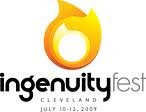 Maybe it’s the new year or maybe it’s the winter weather, but recently I’ve had some revelations that have changed the way I think about creativity.
Maybe it’s the new year or maybe it’s the winter weather, but recently I’ve had some revelations that have changed the way I think about creativity.
First, I had an inspiring conversation with a very creative friend. We were discussing our thoughts on creativity and comparing them to what we normally see portrayed by other creatives. What we came to the conclusion is that unlike of them, we were more interested in practical creativity.
The kind of stuff that gets you through your day. The small innovations you make to your daily life to make it easier, more interesting, etc.
Then, while reading ahead for one of my classes, I came upon a chapter on creativity and business innovation. There was an abbreviated version of an article published in 2006 in BusinessWeek, entitled The Myth of Creativity. In it, the author declares the whole concept of creativity training to get the big aha out of people as merely a waste of time.
Why?
Because creativity is more about the little aha’s and the small changes we make to our lives than the big idea that would make us a hero. Every one of us does this on a daily basis, whether we are conscious of it or not. So instead of encouraging people to have grandiose creative ideas that change the world, let’s encourage them to start with the little aha’s that grow into big aha’s.
- How can you create more little aha’s?





